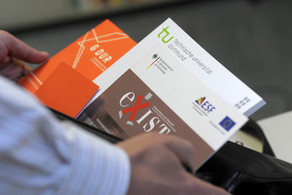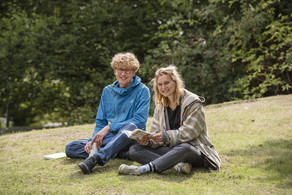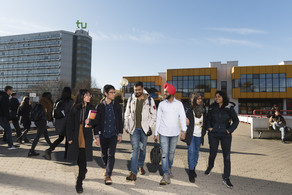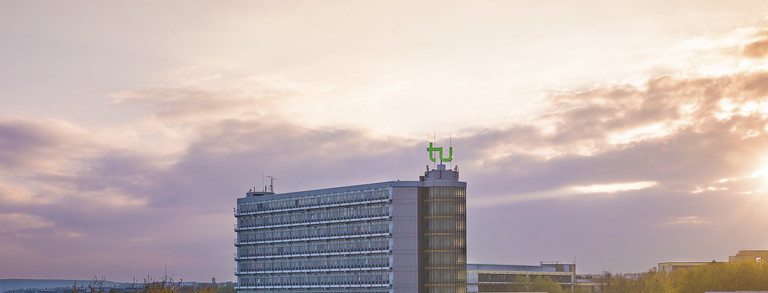Increasing Number of False Reports About Anti-AfD Demonstrations in Circulation
- Top News
- Research
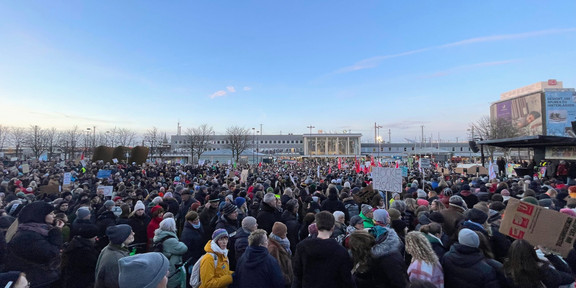
The reporting by the research network Correctiv about a secret meeting of right-wing extremists and AfD [Alternative for Germany] members in autumn 2023 has triggered a wave of demonstrations all over Germany. In the protests against right-wing extremism, false reports are now increasingly appearing on the Internet, as observed by the “German-Austrian Digital Media Observatory”, or GADMO for short, led by the Institute of Journalism (IJ) at TU Dortmund University. EU-wide, misinformation about the farmers’ protests is currently the biggest topic.
Hamburg, 19 January: Tens of thousands of people gather at Jungfernstieg to protest against the shift to the right in Germany. On the messenger service Telegram, however, a post is circulating claiming that significantly fewer people were at the demonstration. The post is accompanied by two photos from Jungfernstieg: one shows few people, the other very many - allegedly the second picture was edited to make the demonstration look bigger. This is an example of the numerous fake news currently circulating about the demonstrations in Germany on social media platforms or in messenger apps.
GADMO has set itself the goal of combating disinformation and misinformation in a coordinated manner. To this end, the leading fact-checking organisations in the German-speaking world are working together: the Deutsche Presse-Agentur (dpa), the Agence France Press (AFP), the Austria Presse Agentur (APA), and Correctiv. They cooperate in the project with the communication and data scientists of the Institute of Journalism (IJ) and the Department of Statistics at TU Dortmund University as well as the AIT Austrian Institute Of Technology. “Disinformation campaigns often spread much more effectively online than traditional information, also because they evoke strong emotional reactions, are shared many times on social networks and often serve conspiracy narratives,” says Prof. Christina Elmer, Professor of Digital and Data Journalism at the IJ. She leads the GADMO research and coordinates the entire project. “Independent media can help to restore the factual basis that is essential for societal discourse with their research and fact-checking.”
Two narratives: protests are said to have been smaller or entirely staged
According to the GADMO analysis, two narratives are mainly being conveyed in the fake news about the demonstrations: First, that the size of the demonstrations is being exaggerated. The evidence for this includes pictures that allegedly show manipulated photos – as in the case of the protests in Hamburg – or verifiably the photo of another event, such as a very small demonstration to commemorate the victims of National Socialism in Dresden. The second narrative, which is widely circulated, claims that the demonstrations were staged. Evidence includes a fake advertisement from a city administration, which allegedly wanted to recruit extras as demonstration participants for a video recording. However, this is an advertisement from a casting agency from 2022, which was looking for extras for a film sequence. In another post, an Antifa card available online as a joke item is used as evidence that demonstrators are being paid.
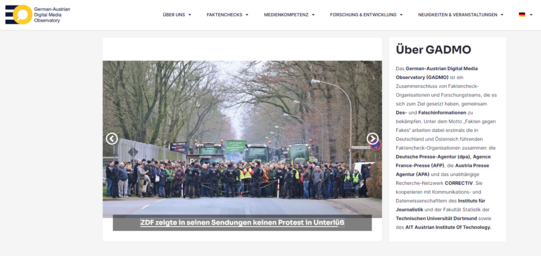
GADMO is part of the Europe-wide “European Digital Media Observatory”, or EDMO for short, which is funded by the EU Commission. The EDMO partners – 14 hubs covering all 27 EU member states as well as Norway – also register fake news in connection with the demonstrations in Germany. Here too, there are false reports, but the other way around: Photos and video recordings of the large demonstrations from Germany are put into a false context and presented, for example, as impressions of pro-Palestinian demonstrations or of the farmers’ protests, which have also been taking place in Germany for several weeks, but also in other European countries.
EU-wide, EDMO is currently registering a very large number of false reports, especially about the farmers’ protests. These protests have also been used to spread anti-EU narratives or Russian propaganda messages. For example, the farmers in Germany were allegedly protesting because the government was “sending all the money to Ukraine” or spending too much resources on supporting immigrants. “The campaigns mentioned are good examples of the fact that disinformation is very often also politically motivated. In the super election year 2024, it is therefore all the more important to keep an eye on the topics, narrative patterns, and underlying strategies,” says Prof. Elmer. “Thus, we in the EDMO network are already preparing for possible campaigns around the European elections.”
Contact person for queries:


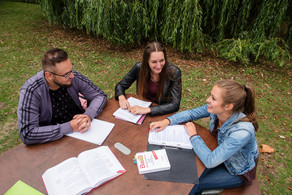
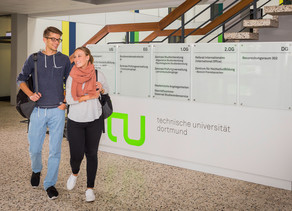
![[Translate to English:] Partner Four hands are holding the green logo of TU Dortmund University](/storages/tu_website/_processed_/1/d/csm_Partner_Nicole_Rechmann_KW_40b35bb3fd.jpg)

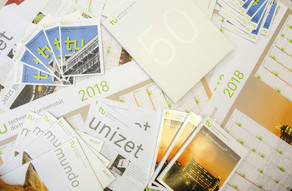

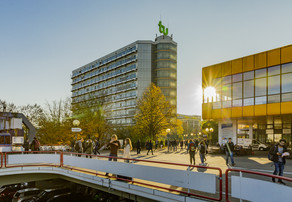
![[Translate to English:] Forschung An apparatus with tubes in a laboratory](/storages/tu_website/_processed_/0/c/csm_Forschung_Juergen_Huhn_cbd34afd6d.jpg)
![[Translate to English:] Studium Five students are sitting in a lecture hall. They are talking to each other.](/storages/tu_website/_processed_/c/9/csm_Studium_FelixSchmale_81d94adc86.jpg)
